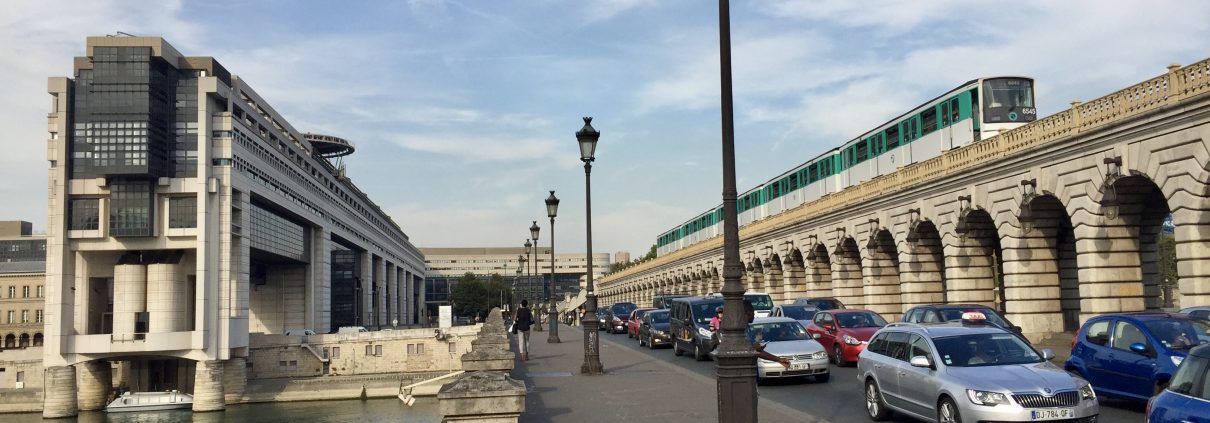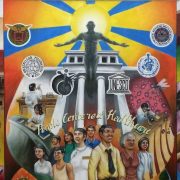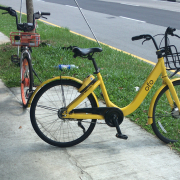Sciences Po, Paris, and a Change of Scenery
By David Fenn, MURP ’17
After four years of a Southern California, UC, and American perspectives on urban planning and transportation issues (undergrad at UC San Diego and my first year at UCLA Luskin), coming to Sciences Po in Paris has been a breath of fresh air. The academic approach is more theoretical and the case studies more geographically diverse, but the classes are interesting and the other students are just as passionate about solving a lot of the same problems. The students and professors in the GLM (Governing the Large Metropolis) program come from all over the world which certainly enriches the perspectives on display in discussions, but by far the biggest perspective shift comes from outside of the classroom—from living in Paris with the rest of Europe at your doorstep.
People have called it Babylon, Paname, “La Ville Lumière” (French for the City of Lights), Lutetia (the ancient Gallo-Roman name for Paris), and the City of Cities. Maybe this is my western-centric American education talking, but to some extent they’re right. As an American from the West Coast where anything more than 30 years old seems dated, I can’t really overemphasize the significance of being in a city with more than 2,000 years of history. The monuments and buildings here tell stories of dynasties, revolutions, art movements, and wars. The Haussmann Boulevards and general overhaul of the French capital was one of the earliest and most famous urban planning projects. There are more museums here than I could ever visit, more concerts than I could ever see, and more good food than I could ever hope to taste—none of that has stopped me from trying though. If you’re in an existential mood, it’s easy to see the palaces and monuments and think about the simultaneous opulence and poverty enabled by the Ancien Régime, the spoils of colonialism and imperialism abroad, and the parallels with our own time. If you think about the glittering museum city of central Paris and the contrasts in power, wealth, amenities, and imagery with the Banlieus on the periphery then it’s clear that these issues are just as alive and well here as they are in LA.
As a transportation nerd I have relished in the opportunity to get everywhere I need to go on the Metro. Central Paris is crisscrossed with subways with trains rarely running on headways longer than 6 minutes. The line I take the most comes ever 2 minutes! The RER (the cities commuter rail) thunders through tunnels with fewer stops in the central city getting you straight across it in a matter of minutes, often demonstrating the raw capacity of rail transit with double decker trains over 10 cars long departing every few minutes. Where heavy rail doesn’t take you, a tram or bus probably does—and usually in its own lane. With the recent passage of the Measure M transportation ballot measure in LA, Paris seems like a vision of what tomorrow’s mobility might be like back home. With that being said, I have to admit I was disappointed by the relatively low level of biking in Paris which has close to the same mode share as LA for biking when some of its more progressive neighbors on the continent like Amsterdam and Copenhagen have more like 50-60% of people biking for transportation.
That brings me to the next major benefit of living in Paris for a few months: the rest of the continent. If I wanted to visit Reykjavik, Amsterdam, Copenhagen, London, Bristol, Marseille, Cannes, Barcelona, and Monaco from the states it would more than likely entail a series of expensive plane tickets, hours of travel spent packed like sardines in flying aluminum cylinders, and weeks of planning. Since I’ve been here, I’ve booked last minute trains and budget plane tickets to each of those places—usually for about the same price as taking the train to San Diego from LA. The distances are smaller here but the cultural differences are immense. And did I mention they have seasons here?














